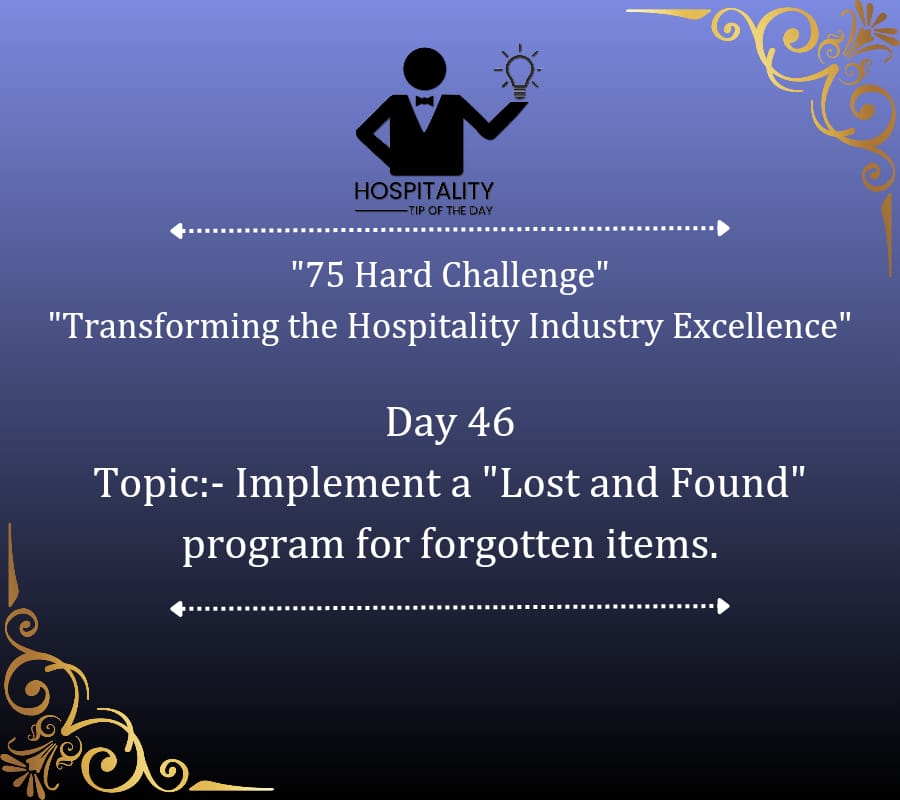
In the dynamic world of hospitality, creating a memorable and pleasant experience for guests is paramount. From luxurious resorts to budget-friendly motels, ensuring that guests feel comfortable and taken care of is a top priority. However, it’s not uncommon for guests to accidentally leave behind personal belongings, resulting in moments of distress and inconvenience. To address this issue and enhance the overall guest experience, the hospitality industry can benefit greatly from implementing a comprehensive “Lost and Found” program.
The Importance of a “Lost and Found” Program
1. Guest Satisfaction
A “Lost and Found” program is not just a practical necessity but a customer service imperative. Guests who accidentally leave behind personal items expect the hotel to assist them in recovering their possessions. When handled efficiently, this can significantly enhance guest satisfaction, leaving them with a positive impression of the establishment.
2. Reputation Management
The hospitality industry thrives on reputation. A well-implemented “Lost and Found” program demonstrates a commitment to guest welfare, contributing to a positive online reputation through reviews and word-of-mouth recommendations. A happy guest is more likely to become a loyal customer and an advocate for your establishment.
3. Compliance and Legal Considerations
Lost property management is not only a matter of customer service but also a legal responsibility. Many jurisdictions have regulations in place that mandate the proper handling and storage of lost items. A well-structured “Lost and Found” program ensures your establishment complies with these legal requirements, mitigating potential legal issues.
Implementing a Successful “Lost and Found” Program
1. Establish Clear Protocols
Create and document clear procedures for handling lost items, including how to log, store, and return them to their rightful owners. Well-defined protocols ensure consistency and transparency in your program.
2. Dedicated Personnel
Assign dedicated staff members or a team to manage the “Lost and Found” program. This ensures that lost items are properly logged, stored, and returned, reducing the risk of mishandling or loss.
3. Technology Integration
Leverage technology to streamline the process. Implement a digital system for tracking and recording lost items, which can include photographs and detailed descriptions, to make it easier to identify and return belongings to their owners.
4. Communication and Transparency
Ensure that guests are aware of your “Lost and Found” program. Include information about it in guest welcome materials, on your website, and at prominent locations within the establishment. Transparent communication helps guests know what to do if they misplace an item and reinforces their trust in your commitment to service.
5. Storage and Security
Maintain a secure storage area for lost items, with access limited to authorized personnel. High-value items should be stored separately, and proper records of all items should be kept to avoid any potential disputes.
Conclusion
The implementation of a “Lost and Found” program in the hospitality industry is not just a practical necessity; it’s a strategic move that can significantly enhance guest satisfaction, reputation, and legal compliance. By establishing clear protocols, dedicating personnel, integrating technology, maintaining transparent communication, and ensuring proper storage and security, hospitality establishments can provide guests with the peace of mind that their forgotten items will be handled professionally and efficiently. In return, this simple yet crucial service can lead to a more positive guest experience, improved reputation, and repeat business, making it a win-win for both guests and the hospitality industry.









1 thought on “Implementing a “Lost and Found” Program for the Hospitality Industry”